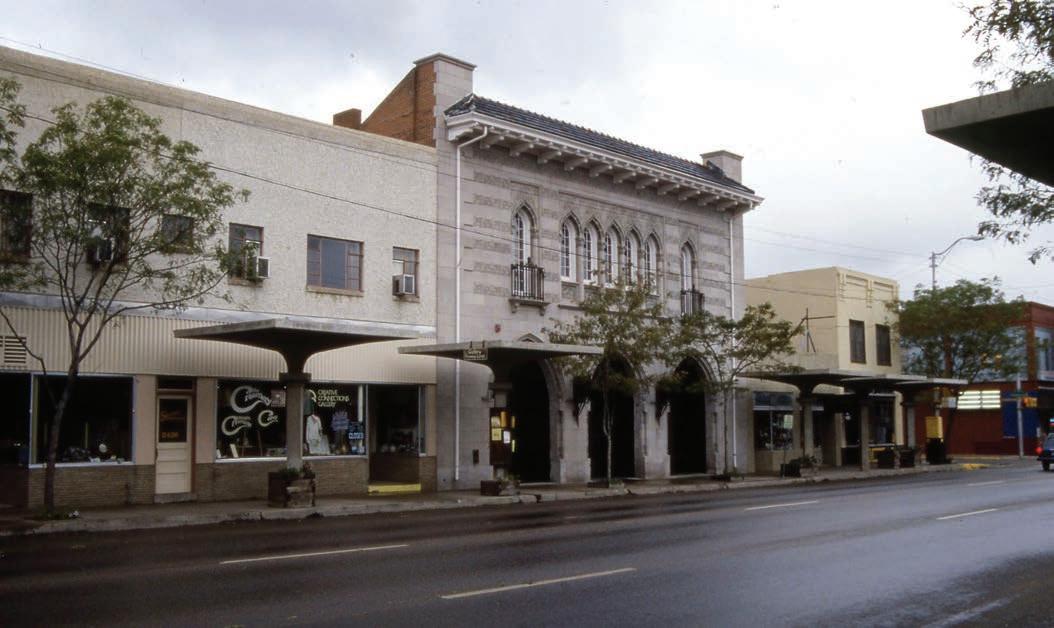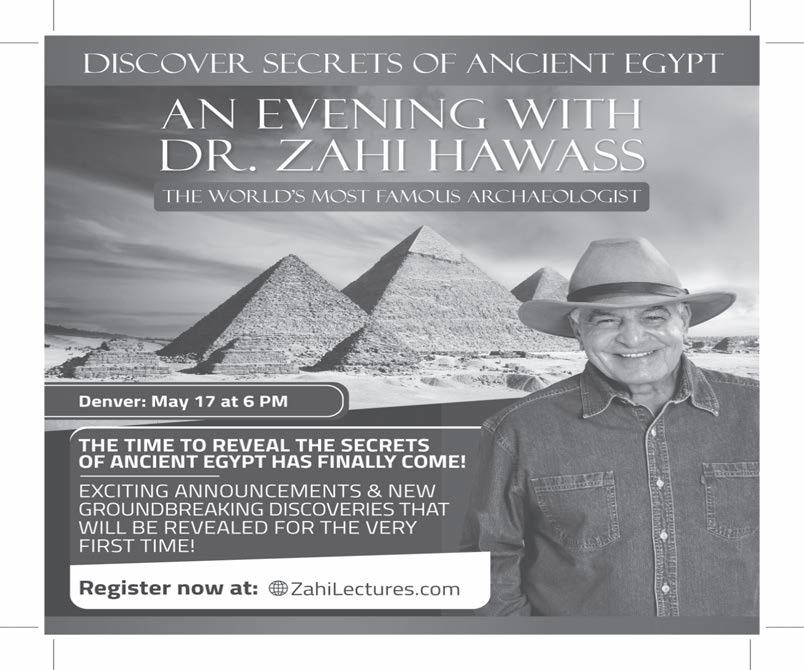
2 minute read
Presentation highlights ‘Littleton Way’
BY SONYA ELLINGBOE SELLINGBOE@COLORADOCOMMUNITYMEDIA.COM
A group of local folks gathered at South Suburban’s King sher Studio at South Platte Park on April 25 to hear former Littleton councilmember/mayor Pat Cronenberger speak about Littleton culture. What is it? How do we conduct our days and nights?
Historic Littleton Inc., which is celebrating 33 years since it formed after a Littleton Leadership Retreat weekend, pointed out that our centennial was almost upon us in 1990 and we had not done any planning about it! e late Mike Massey, who led the retreat, declared such a celebration “a do-able deed” and planning began the following week, bringing on assorted gatherings through the summer and a group that continued as Historic Littleton Inc. e group has continued to o er programming about our past years and on April 25, members and guests heard that our Littleton Boulevard at its eastern end is considered to be a most signi cant stretch of Midcentury Modern buildings in the U.S.

It was formed by the people former councilwoman and onetime mayor Pat Cronenberger spoke about in her talk, “What is the Littleton Culture? What Does It Mean to Do ings the Littleton Way?”




(But rst, the crowd sang a “Happy Birthday” greeting to longtime resident and former council member Carle Zimmerman!)
“Cultures” — a broad term: the arts, Friends of the Library/Museum, productions of human work and thought...” Cronenberger said, adding that she had been an art history major.
She began with a 1934 photo of the Arapahoe County Courthouse, looking west, where there were grassy plains on the horizon. “In the early 1950s, it was still undeveloped, then Martin Marietta and Marathon Oil and Norgren arrived and built new research centers, attracting 500 people — and by 1961, 14,000 people, meaning 40% of Littleton residents were connected to one of those companies, a huge demographic change. e city developed in a `Littleton way’ to address challenges.”
“People were innovative, creative ... Soon a satire called `Fiasco’ addressed their con dence in their community.” e “Fiasco” productions were a musical spoof of Littleton: its city council, school board and whoever else was active around town.
“Marathon funded science teachers and scholarships,” Cronenberger continued. “Zoning changes were needed. e `Better Littleton Party’ directed the city into the 20th century. Names of streets did not conform with Denver’s. Councilmembers dealt with street names and the city was in uenced by Littleton Independent editor Houston Waring. (He made it a point to attend some community meeting almost daily.)
In 1965, a major ood happened in June. Afterwards, a oodplain park grew along the South Platte banks, pushed by the council — a rst in the nation. A di erent solution than that of the Army Corps of Engineers.
Martin Luther King was invited to speak here. e Littleton Council on Human Relations was formed. Public housing was pursued. Interfaith Task Force developed through local churches. e Libby Bortz housing was built and she drove changes in attitude about housing and population. Bradley House was built for low-income seniors.
Arapahoe Community College started in a former elementary school and grew into its present form — ”a major tool to make things happen,” Cronenberger said.
“In 1970, City Manager Larry Borger and council developed the Urban Renewal Authority and Arapahoe Community College was built.” e Littleton Museum developed with high standards and free exhibits. e Littleton Leadership Retreat was held “and everyone left with their marching orders.” e railroad depression led to commuter rail because the infrastructure was already there. and
“Fiasco,” trains, horses, racetrack, equine culture, Martin and Marathon culture ...

“Nothing was impossible,” Rick Cronenberger summed it up!






